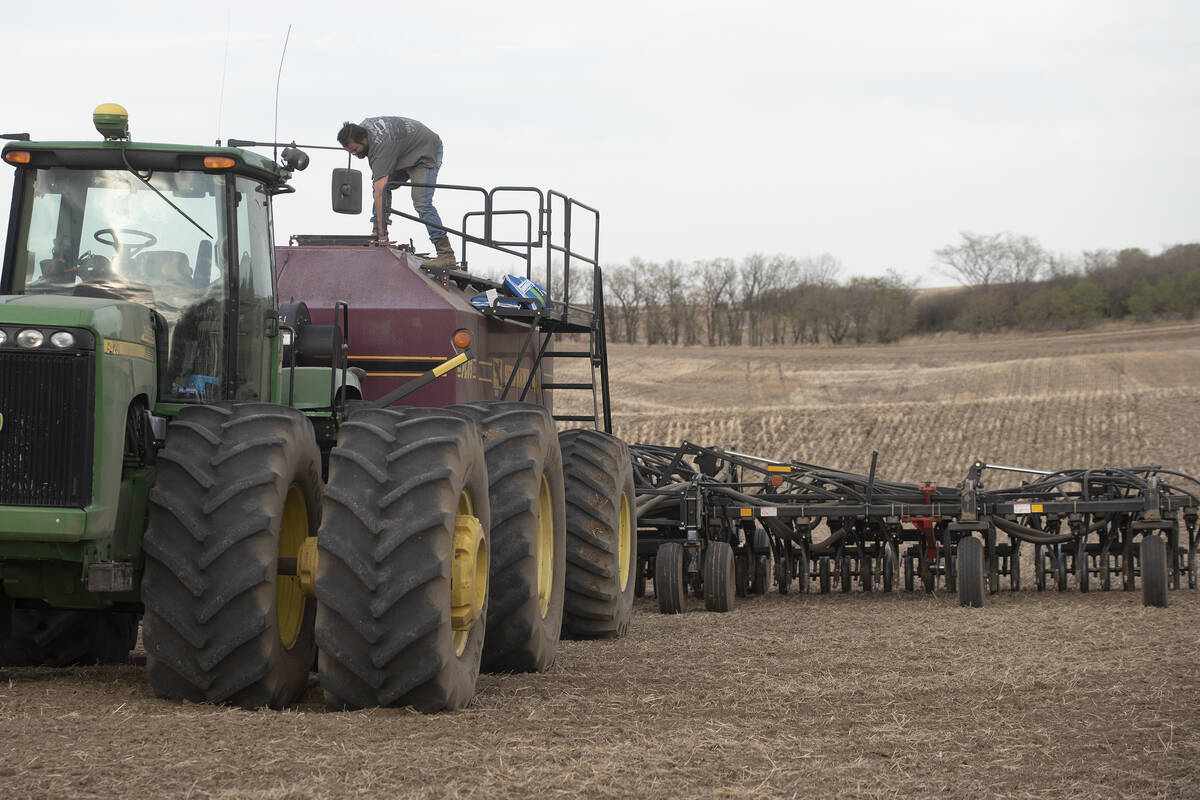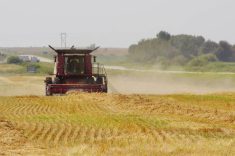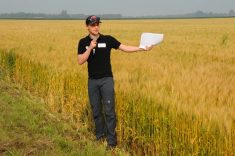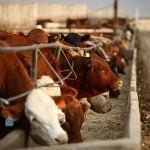Flood waters that lapped close to the doorsteps of Agriculture and Agri-Food Canada’s Brandon Research Centre last month also submerged the plot sites of cereal research programs, and that means no data for researchers this year.
All three programs have been set back a season due to data lost after their plots were inundated by the rising Assiniboine at July’s beginning, said Byron Irvine, associate director of research development and technology transfer at BRC. This isn’t the first time trial sites have been flooded out. They were under water in 2011 too. But it’s the first time flooding occurred this far along in the growing season that anyone can remember.
Read Also

Nutrien pays farmers for efficient nitrogen
Nutrien’s Sustainable Nitrogen Outcomes (SNO) program pays Prairie farmers to limit nitrogen loss and, therefore, fertilizer-related greenhouse gas emissions.
“If it happens in spring, we just move to higher ground,” he said. This time the plants were already well established. “We first started seeing some flooding where it started to impact plots starting about the 4th of July,” he said, adding that at the peak around the 12th of the month some plots were under 3-1/2 feet of water.
Each program has had losses. The wheat and oat programs lost all their early-generation head rows. ”Those are just getting packaged up now to go off to New Zealand. It’ll slow down progress by the one season,” Irvine said. However, many of their yield plots were at other locations and so were not affected. “The barley program had perhaps the biggest impact in terms of the two-row and six-row programs, because a lot of their yield plots were on the station,” he said. BRC will also have to start over next year replanting several pulse crop trials.
It’s definitely a setback for the individual researchers, Irvine said.
Oat breeder Jennifer Mitchell-Fetch, who had just moved her program to Brandon from Winnipeg this past March, lost her entire nursery. “I lost about 14,900 rows or hills, and what we had was everything from F2s up to F6s (generations),” she said. The plant material itself is recoverable, but this does set the oat program back one full generation. “In about four years I may have very few lines in the co-op trial because of this year,” she said.
There were also losses of lines in their fusarium head blight nursery that were near the registration trial level. That means no data to present at the February 2015 meetings of the Prairie Grain Development Committee, and may necessitate asking the PGDC to push that forward a year, she said.
Irvine said the land at BRC itself won’t have any long-term impacts, other than a few more weeds, and the high water stayed away from the main building. But they are starting to talk about what to do to mitigate the risk of this happening again, he said.
“We don’t know if this will happen again. It’s only three years since the spring flood of similar height and that was supposed to be a one-in-300-year flood.”
“We’ll relocate a small portion (of the sites),” he added. “But it’s a very big decision and we don’t want to rush into something. “
















